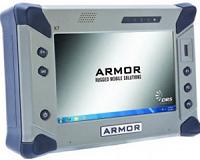| . |  |
. |
London, UK (SPX) Jan 17, 2011 Behind every battle-winning Apache in Afghanistan is a team of unsung heroes working tirelessly to ensure the British Army's gunship is fully serviced, fuelled and fitted with the fire power to take on the Taliban. While specialist support crews in theatre conduct the day-to-day maintenance on the hi-tech helicopter, the aircraft also has a legion of engineering experts poised for action in the UK. Based at Attack Helicopter HQ in Wattisham, a highly-skilled group of Royal Electrical and Mechanical Engineers (REME) craftsmen work alongside civilian contractors to run a Depth Support Unit (DSU) - an organisation charged with keeping the Apache fleet fit for flight. Whenever an aircraft clocks up 600 flying hours it is booked into the state-of-the-art service centre to be stripped down to its bare frame and meticulously cleaned and inspected for wear and tear or damage. Parts are then repaired or replaced before the helicopter is rebuilt and sent back into service. Warrant Officer Class 1 Christian Rouse, the man responsible for overseeing the movements of every Apache on behalf of the Joint Helicopter Force, said: "Afghanistan is the priority and they're flying a lot of hours out there. It's always busy, there's always another op on. "They go out for seven to eight weeks then come back here and go into depth service. Then about 60 to 65 days later they'll go back to the regiment." Up to ten Apaches at a time can be housed in DSU's enormous hangar, where they will move sequentially along a pulse line of nine stands, spending roughly nine days at each. Common rectifications made by the unit include removing corrosion, replacing worn nuts, bolts and valves, and soldering cracks to joins on the airframe. A joint Service effort, the Army delegation is partnered at Wattisham with the Royal Navy's Mobile Aircraft Support Unit (MASU), specialists in helicopter repairs and fixing breakages caused by enemy bullets: "They also have a section based in theatre to mend any damage sustained out there," explained WO1 Rouse. "MASU patch up the aircraft to keep it flying but when they do a repair it's usually permanent. They are awesome." Contributing to the civvy contingent are engineers from Agusta Westland, the company responsible for adapting the Apache for UK military use, and subject matter experts from organisations such as Rolls-Royce, Longbow International and Lockheed Martin, who provide advice on the aircraft's engines, radar and sighting systems. Dougie Lloyd, a former REME Lance Corporal, is one of many ex-Service personnel based on the workshop floor: "A lot of our work is tin-bashing - repairing dents to the airframe and dealing with normal wear and tear," the crew chief said. "Faults are found and we fix them or replace parts. Then there are a few scheduled inspections and follow-ups. "It's getting busier and busier in here because everyone wants Apache. The aircraft like the desert but coming back from Afghanistan they are dirty because they pick up a lot of sand, especially any exposed engine parts that are a bit wet as particles will stick to any leak." Unless a severe fault is discovered, rebuilding begins soon after the repair phase, with the gearbox and main rotor head among the first major parts put back onto the airframe. Next are the drive shafts, tail rotor gearbox and tail blades, before finally the main blades and the weapon systems are put back. Functional testing is carried out throughout the rebuilding phase, ensuring the aircraft leaves the DSU ready to fly: "They can be in here for anything between 59 and 79 days," said WO1 Rouse. "It fluctuates for various reasons. It could be the need for spares, amount of airframe repairs or just an unwillingness of the aircraft to become serviceable in the air-test phase." The final stage of the service process sees mission-specific modifications made to the helicopters: "You can't send any old aircraft out to Afghanistan, it must have desert engines and the right radar and weapon systems - known as the helicopter integrated defensive aid suite - to bring it up to what we call theatre entry standard," WO1 Rouse concluded. That the team at DSU continually meets this high benchmark ensures that one of the Army's most powerful air assets is ready to fly to the aid of troops on the ground in Helmand province whenever needed.
Share This Article With Planet Earth
Related Links Ministry of Defence (United Kingdom) The latest in Military Technology for the 21st century at SpaceWar.com
 DRS Expands Armor Product Offering With Its All-New Compact Tablet
DRS Expands Armor Product Offering With Its All-New Compact TabletParsippany NJ (SPX) Jan 17, 2011 DRS Technologies has announced that its Tactical Systems Group has recently unveiled its newest ARMOR rugged mobile computer, the ARMOR X7 compact tablet. This all-new small mobile computer is specifically-designed for those mission-critical tasks that require connectivity, hand-held mobility, ease of use and the durability to support all-weather operations. "The ARMOR X7 is a completely n ... read more |
|
| The content herein, unless otherwise known to be public domain, are Copyright 1995-2010 - SpaceDaily. AFP and UPI Wire Stories are copyright Agence France-Presse and United Press International. ESA Portal Reports are copyright European Space Agency. All NASA sourced material is public domain. Additional copyrights may apply in whole or part to other bona fide parties. Advertising does not imply endorsement,agreement or approval of any opinions, statements or information provided by SpaceDaily on any Web page published or hosted by SpaceDaily. Privacy Statement |